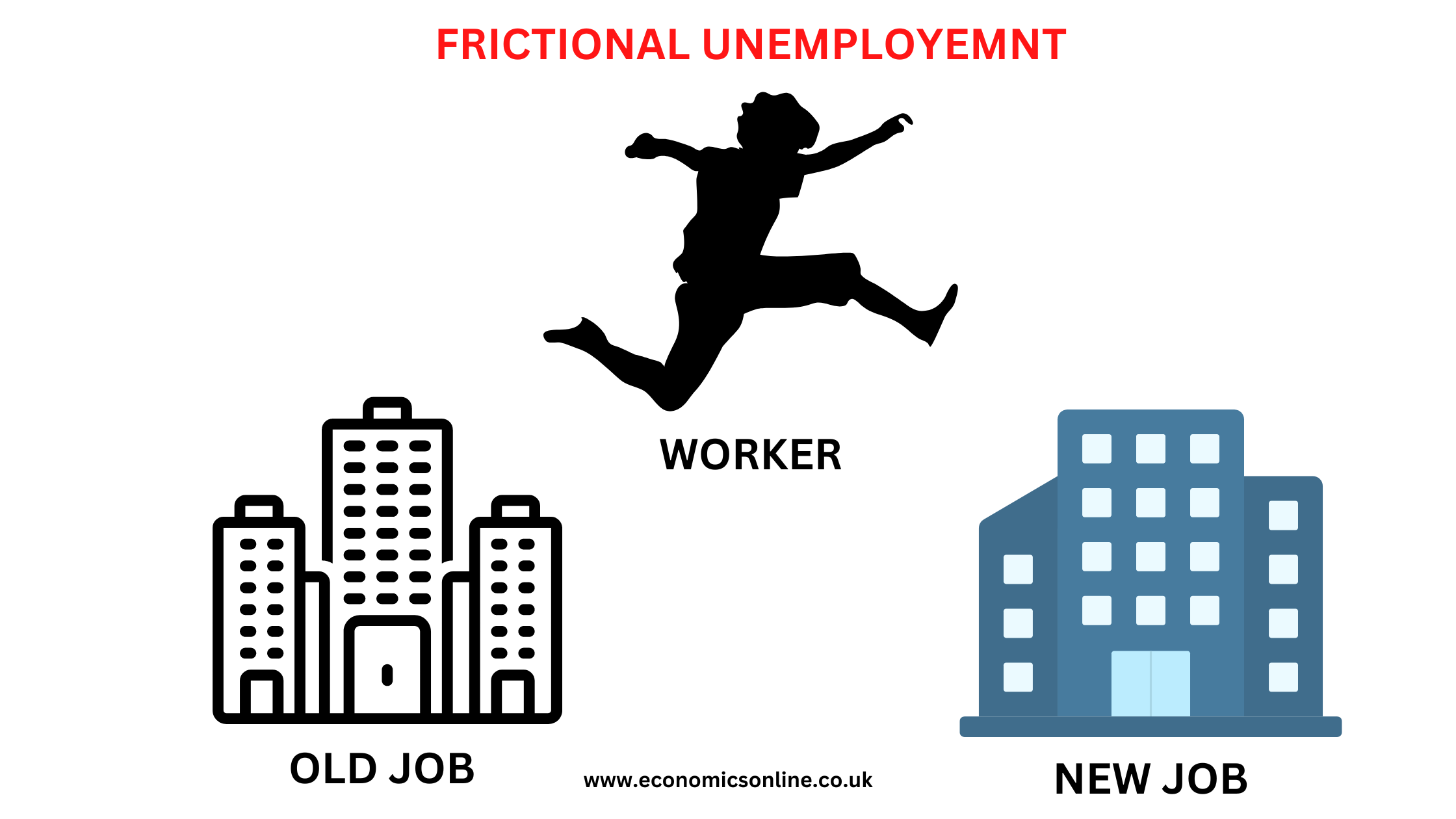
Frictional Unemployment
Frictional unemployment refers to the unemployment that occurs as a result of the normal functioning of the labour market. It occurs when workers leave jobs for a greater purpose or lose jobs and take time to find alternative jobs with better positions, or when job-seekers or new workers are searching for their first job after completing their education.
Frictional unemployment can be evident in a growing, stable economy and is regarded by economists as a part of natural unemployment, the minimum unemployment rate in an economy due to economic forces and the movement of labor. Hence frictional unemployment is present even when the economy is considered at full employment.

Calculating Frictional Unemployment
The frictional unemployment rate is calculated by dividing the workers actively looking for jobs by the total labor force. The workers actively looking for jobs are typically classified into three categories: workers who left their job, people returning to the workforce, and new entrants.
The Causes of Frictional Unemployment
One of the main causes of the phenomenon of frictional unemployment is the time it takes for workers to search for and find new jobs (job searching). This can occur when workers are voluntarily leaving their current job in order to pursue better opportunities with better pay or for personal reasons, or when they are involuntarily losing their job due to restructuring or downsizing. In either case, it may take some time for the worker to find a new job that is a good fit for their skills and experience.
Another cause of frictional unemployment is the mismatch between the skills and experience of workers and the needs of employers. This can occur when some workers from the workforce have skills that are not in high demand, or when they are seeking employment in a geographic area with few job opportunities. It can also occur when workers are seeking employment in a new field or industry, and need to acquire new skills or experience in order to be competitive in the job market.
Frictional Unemployment and other Types of Unemployment
Frictional unemployment is the unemployment that occurs when workers are in the process of moving from one job to another. It is a natural and unavoidable part of the labor market and is generally considered to be short-term.
Other categories of unemployment include structural unemployment, which occurs when there is a mismatch between the skills workers have and the skills employers need for available jobs due to any structural change in the economy, and cyclical unemployment, which occurs during economic downturns of the business cycle when there are not enough jobs for all the employees.
Is Frictional Unemployment a Matter of Concern?
Frictional unemployment is a normal part of the economy and is not necessarily a cause for concern. However, if it persists for a long period of time, it can become a problem for both individuals and the economy as a whole because of its negative impact.
The impact of frictional unemployment on the economy is generally less negative as compared to other forms of unemployment, such as structural or cyclical unemployment. However, it can still have some negative effects.
One negative impact is that frictional unemployment can cause a loss of productivity as workers are not able to contribute to the economy while they are in between jobs. Additionally, it can also lead to a decrease in the overall level of consumer spending, which can have a ripple effect on the economy.
Another negative effect is that it can be a source of anxiety and stress for workers who are trying to find a new job. Being unemployed can also lead to a loss of income and benefits, which can make it difficult for workers to meet their basic needs.
Furthermore, frictional unemployment can also lead to a decrease in the overall level of economic growth, as resources are not being fully utilized.
Addressing Frictional Unemployment
There are several ways that policymakers and businesses can address frictional unemployment.
One approach is to invest in education and training programs that help workers acquire the skills and experience they need to find employment. This can include initiatives such as job training programs, apprenticeships, and educational grants or loans. These programs can be particularly helpful for workers who are seeking employment in a new field or industry, as they can provide the necessary skills and experience to make them competitive in the job market.
Another strategy for addressing frictional unemployment is to implement policies that encourage job creation and economic growth. This can include tax incentives for businesses, infrastructure investments, and regulatory reforms that make it easier for businesses to operate and create jobs. These policies can help to increase the demand for labour and create new job opportunities, which can help to reduce frictional unemployment.
In addition to these policies, there are also several measures that individuals can take to reduce their risk of experiencing frictional unemployment. One of the most important things that individuals can do is to continually update their skills and education in order to remain competitive in the job market. This can include taking continuing education courses, obtaining additional certifications or degrees, and staying up-to-date with new technologies and industry trends. Additionally, individuals can take steps to network and build relationships with potential employers, as this can increase their chances of finding a new job if they become unemployed.
The governments and firms can also provide information about the job vacancies in order to reduce the time taken by workers to find these jobs and also the time taken by employers for hiring workers, hence reducing frictional unemployment.


